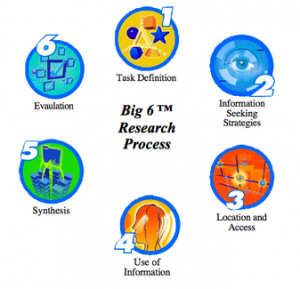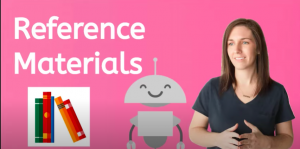My Learning Journey: The Basics of Reference Services (Thematic Blog Post #1)
Laying the Foundation
This theme reiterated the various roles that a Teacher-Librarian plays in a single day, particularly as an “information specialist”. It made me think back to the very first course I completed in the TL Diploma program, LIBE 461, where I initially learned about the many roles of the Teacher-Librarian. As TL’s we guide students and other teachers towards the right sources of information, as well as help them develop skills to use those resources appropriately and accurately.
I appreciated the exploration of terminologies in Riedling’s text, such as ‘Gazetteers’ and ‘Digital Divide’. I learned that my understanding of the term ‘Reference’ was quite simplistic, and that a reference collection includes a plethora of materials and resources.
Reference Collection: The section of the library which houses the print copies of reference materials, such as encyclopedias, dictionaries, etc.
Reference Source: Riedling defines a reference source as “materials, from books to periodical to photograph, deigned to be consulted for definite items of information rather than to be examined consecutively” (2019, p. 18).
Although this in not an exhaustive list, some types of resources include:
- Encyclopedias
- Yearbooks
- Almanacs
- Handbooks
- Dictionaries
- Biographical sources
- Atlases
Reference Services: The activities required to meet the information needs of the SLLC’s clientele. Eg. answering research questions, locating answers to quick information requests, instructing users in the selection and use of appropriate tools and techniques for finding information, conducting searches, directing users to the location of library resources, assisting in the evaluation of information, selecting, weeding, and evaluating resources.
I like to use videos to help students learn and reinforce information searching skills. This year I plan to go one step further and have my students create their own videos to show other students.
The Research (and Inquiry) Process
Another significant takeaway for me was the Reference Process. Riedling outlines a five-step process:
- A need for information
- A question
- The search for information
- An answer or response
- An evaluation
In my own experience as a classroom teacher, I found that it is crucial to explicitly teach students how to progress through each of the steps. I conducted a science inquiry unit with my class this year and a large component was searching for information and evaluating if the information is accurate and credible. It is definitely daunting as a teacher to go through the research process with 28 students… but I feel that Theme 1 has already helped me develop better strategies. In addition to helping students follow the research process, I was able to reflect on my own understanding of the research process, my patience in dealing with frustrations and helping students stay positive, and my own eagerness to help students reach their literacy goals and become Information Literate Citizens. Consequently, the research process goes hand in hand with the inquiry process. I was already familiar with the BCTLA Points of Inquiry, but I appreciated exploring other models, particularly the Big 6 Model. I found it to be simple and student-centered.

https://ashley.nhcs.libguides.com/researchprocess/Big6
Building a Collection
Much of the material around building a reference collection was review from a previous course (LIBE 463). Still, it was a great refresher to read about collection evaluation, selection, and the overall Evaluation Process, especially focusing on the specific reference collection. I have some experience using the Ministry of Education’s Evaluation Criteria , which is a fantastic guide for evaluating resources for the SLLC. It is important to note the specific evaluation criteria for each type of reference source. I also like to review the Leading Learning – Standards of Practice for School Library Learning Commons in Canada (Canadian Library Association). This document has been essential in learning about the best practices for SLLC in various aspects, including the reference collection and helping students succeed in their information and critical literacy.
Furthermore, based on the reading Achieving Information Literacy (link) I learned that my school SLLC falls short of what is deemed an “Acceptable” reference collection. It was also interesting to read others’ discussion posts about their SLLCs and how they may fit with the standards. Funding issues and high costs of reference materials make it difficult to maintain an up to date reference section in the SLLC.
Print and Electronic Resources
In my opinion, electronic resources may often be more timely and therefore more useful to students when finding information. My school district has various subscriptions to electronic reference resources, providing free access to all students and staff. Each year I share our online catalogue website with my students and we take time to explore the various resources. I then show my students explicitly how to use each resource so that throughout the year they can use it a tool for research in various subject areas. I like how many of the electronic reference resources such as World Book Kids and National Geographic Kids are easily adaptable to various learning needs and abilities.

https://www.worldbook.com/store/p/545-World-Book-Kids.aspx

Our district subscriptions to electronic reference materials.
The digital world is a magical place of endless information, and when students learn the skillset to navigate through the digital world, great things can happen! Some helpful resources for teaching students digital information literacy are Commons Sense Media and Media Smarts. As our Theme 1 comes to an end, I look forward to learning more in-depth about the reference materials and how to best serve the school community.
Asselin, M., Branch, J., & Oberg, D., (Eds). Achieving information literacy: Standards for school library programs in Canada. Ottawa, ON: Canadian School Library Association & The Association for Teacher-Librarianship in Canada.
Beaudry, Richard. (2022). Lesson 4: Print and/or Electronic Reference Materials. LIBE 467. UBC Canvas. Retrieved from https://canvas.ubc.ca/courses/84997/pages/lesson-4-print-and-slash-or-electronic-reference-materials?module_item_id=3995254.
Canadian Association for School Libraries (CASL) 2003. Achieving Information Literacy Standards for School Library Programs in Canada. Retrieved from http://accessola2.com/SLIC-Site/slic/ail110217.pdf
Riedling, A. M., & Houston, C. (2019). Reference skills for the school librarian: Tools and tips (4th ed.). Libraries Unlimited.
